Like many really good sea stories, naval historian Paul Lawton’s begins with shots of 100 proof whiskey chased down by bottles of Budweiser.
In 1998, the Massachusetts man was teaching a course on German U-boat operations when one of his students helped reunite him with a pair of long-lost friends, Bob and Paul Westerlund.
Over drinks, their chitchat turned to the wreck of the U-853.
The brothers blamed that submarine for sinking their father’s warship, the Ford Motor Company-built Eagle PE-56, during the closing days of World War II.
More than two decades later, Lawton told Navy Times that he was baffled by that conversation because he vividly recalled childhood visits to their home and seeing their dad.
He soon realized, however, that the man from his early memories was their stepfather. Their biological dad went down with 48 other crew members and officers, and his watery grave off the coast of Maine remained undisturbed over the span of decades.
“It was a sinking that I was not familiar with,” Lawton said, “and I was familiar with every German U-boat operation and sinking.”
That’s because in 1998 there wasn’t a incident recorded in the U.S. Navy’s official files of a German boat sinking Eagle 56, a sub-hunter that had been towing targets for other warships.
Its sinking was blamed on an April 23, 1945 boiler explosion that cleaved the hull and spared only 13 survivors, the Navy’s greatest loss of life in New England waters during the war.
“I went back to some of my German sources, and realized that one of them mentioned the sinking of this small surface ship, the Eagle 56, and the fact that the U-853 was operating in the area and might have been the culprit,” Lawton said.
So the submarine sleuth commenced solving the mystery of Eagle 56′s disappearance, a story the Smithsonian Channel is bringing to television in a three-part series about what it calls “the Holy Grail of missing World War II warships.”
THE NAVY GOT IT WRONG
When Lawton dusted off the Navy’s 1945 report about Eagle 56, it was littered with red flags. The biggest was a crucial miscalculation about how ships were built in the early 20th century.
“Modern ships with steam turbines don’t just explode,” Lawton told Navy Times.
“A boiler explosion was something that could have happened in the 19th century, but with modern duplex safety valves and so forth, which were built from World War I and on, that type of explosion did not happen.”
RELATED
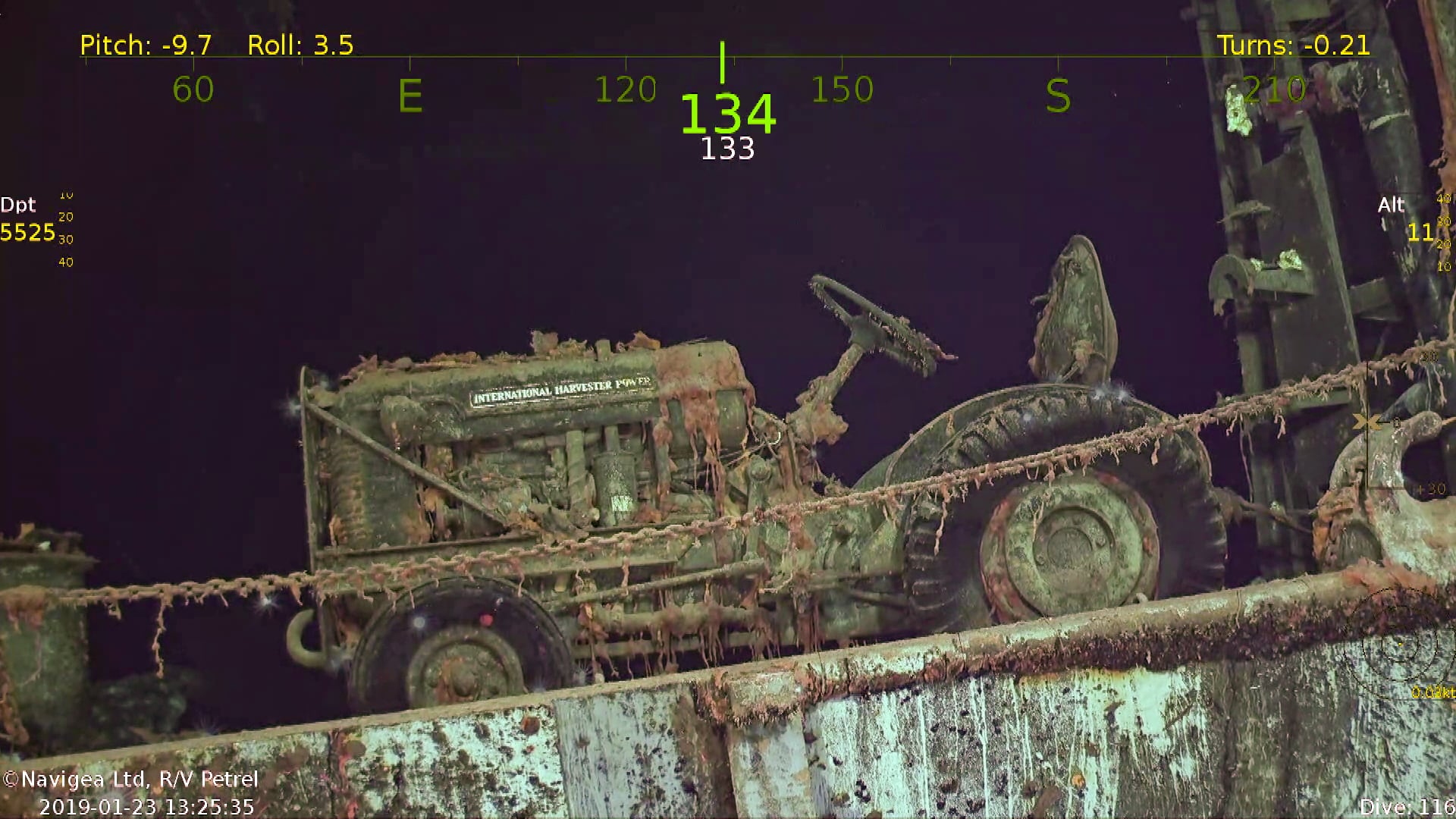
Eagle 56 was powered by a steam turbine fed by two small boilers, each filled with about 750 gallons of water, and those specs didn’t fit the Navy’s narrative about the sinking.
“Witnesses stated when the explosion went off, the ship was actually lifted out of the water and drove a water column 300 feet in the air,” he said. “Now, 750 gallons, even multiplied by two, does not generate a 300-foot water column.”
To Lawton, a detonation inside the ship might’ve blown some of the top deck machinery out of place but it wouldn’t lift a ship out of the water.
“It’s a physical impossibility,” he said.
Survivor statements seemed to be describing what resembled the explosion of a German torpedo built late in the war, one that used a magnetic proximity fuse designed to blow underneath a target, heave it out of the water and snap its keel in half.
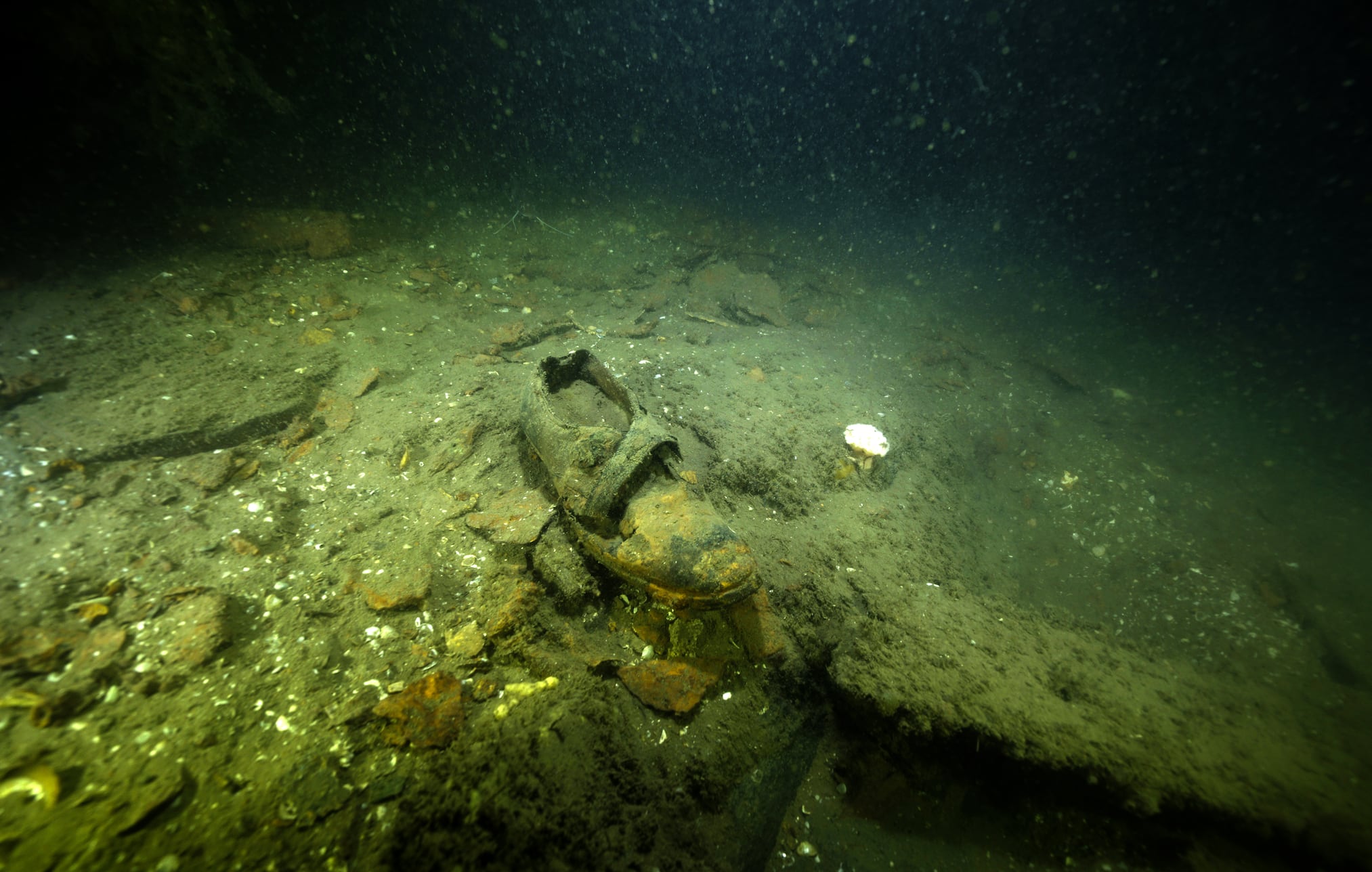
A timeline revealed that Eagle 56 had undergone an inspection only 10 days before its sinking. And just 14 minutes prior to the explosion, the watch had changed, according to the ship’s log.
“During that time, the men who were being relieved would have checked oil pressures, water temperatures, water levels, vacuums,” Lawton said. “They would have put everything down in that log to make sure it was in proper running order.”
Because the sailors assuming watch were ordered to do the exact same thing, all the key readings would’ve been checked twice.
“There was no way catastrophic damage could result from those boilers,” Lawton said.
A TROTTING HORSE
In the Navy’s 1945 report from the court of inquiry, Rear Adm. Felix X. Gygax of the 1st Naval District noted there was “at least equal evidence” to support a theory of an external underwater explosion consistent with an enemy mine or torpedo.
Nevertheless, Gygax eventually signed off on the findings of a “non-enemy action, accidental boiler explosion,” an official conclusion that went unchallenged for 57 years.
Lawton and his research team started tracking down Eagle 56′s aging survivors, all of whom confirmed it was a torpedo attack. Each man was incredulous that the Navy claimed otherwise.
Some survivors who jumped from the stern of the ship into frigid waters reported glimpsing a submarine’s conning tower breach the waves from about five football fields away.
Others on the tower spotted what looked like a yellow shield adorned with a red trotting horse, “like a reverse Ferrari emblem,” Lawton said.
Although the Kriegsmarine outlawed it, U-853 had a distinct conning tower insignia.
“If you were to put something on a submarine that gave away its identity, surface ships and aircraft would then be able to track it by its number — where it was going and where it was coming from,” Lawton said.
Hollywood often depicts U-boats stenciled with large white numbers, but that was a World War II rarity.
After the wreck of the U-869 was discovered in 1993 off the coast of New Jersey, for example, divers spent years exploring the sub until they found compartment tags that listed the boat’s number.
On May 6, 1945, less than two weeks after the Eagle dipped below the waves and two days before Germany’s unconditional surrender, the U.S. Navy’s destroyer escort Atherton and frigate Moberly dropped depth charges on a suspected U-boat south of New London, Connecticut.
Oil gurgled to the surface, along with a table for charts and a German officer’s cap.
The Navy later sent a hard hat diver down 130 feet to inspect the wreckage.
Landing on the conning tower, he identified the boat’s number and noted its unique insignia.
A trotting horse.
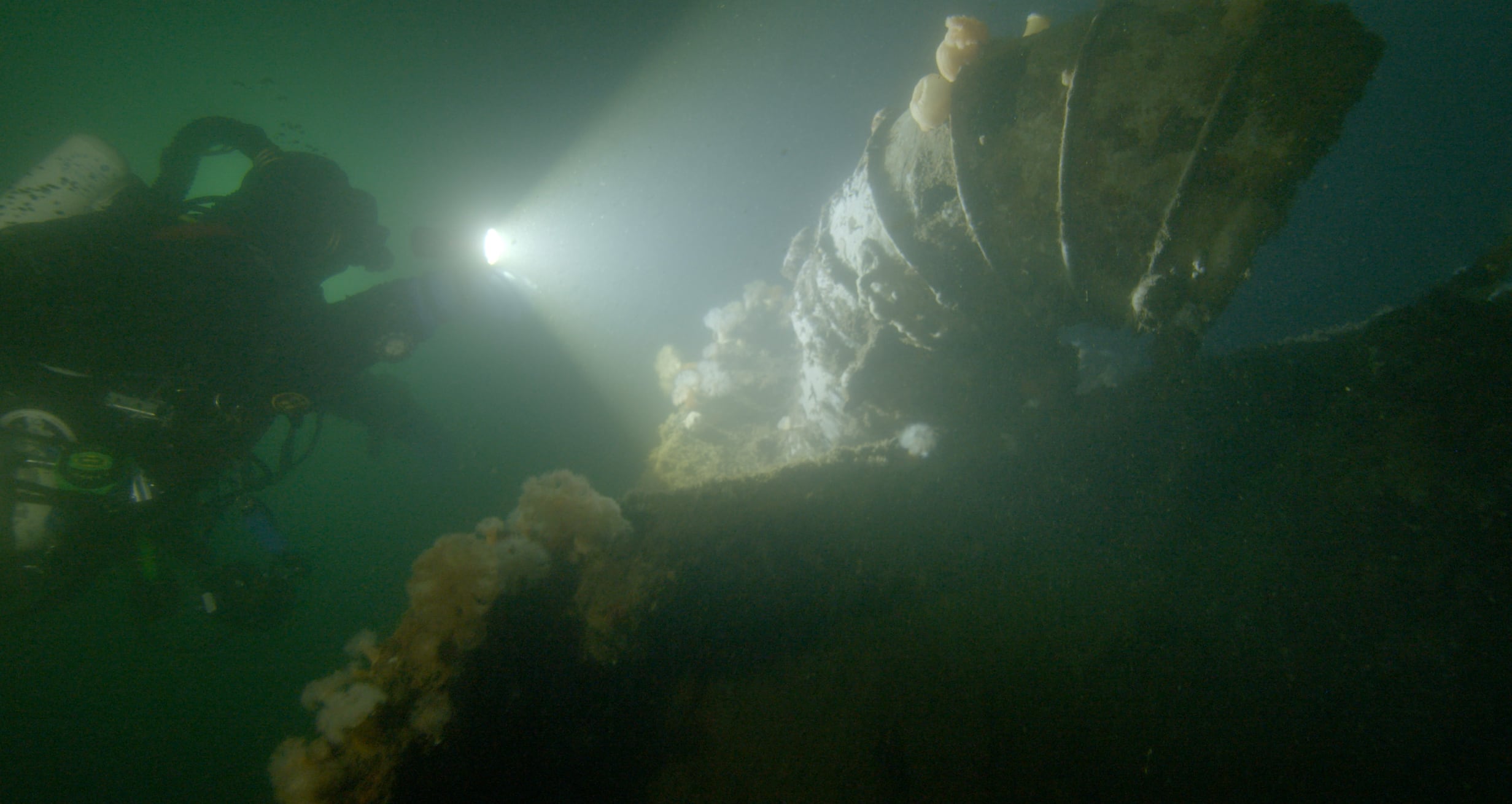
SUICIDE SUBS
The commander of U-853 turned 24 years old shortly before his boat began its eternal patrol off the coast of Connecticut.
On April 4, 1945 — nearly three weeks prior to the attack on the Eagle 56 — the submarine received a message to stop prowling for vessels and surrender to Allied forces.
More than a dozen German subs were operating near the North American coast during the final days of the war in Europe. Some surrendered in Portsmouth, New Hampshire, and another — U-190 — in Canadian waters.
But others, including U-853, continued trying to sink ships, often without strict radio silence which made their locations easier for Allied personnel to triangulate, locate and attack, usually killing all hands when a sub went down.
“It remains a question as to what the Germans were actually trying to achieve at the end of the war,” Lawton said. "With Hitler encircled and under siege, what was their intent in sending this last fleet of boats to the American coast to sink allied shipping?
“It was, for those men on those boats, a virtual suicide mission.”
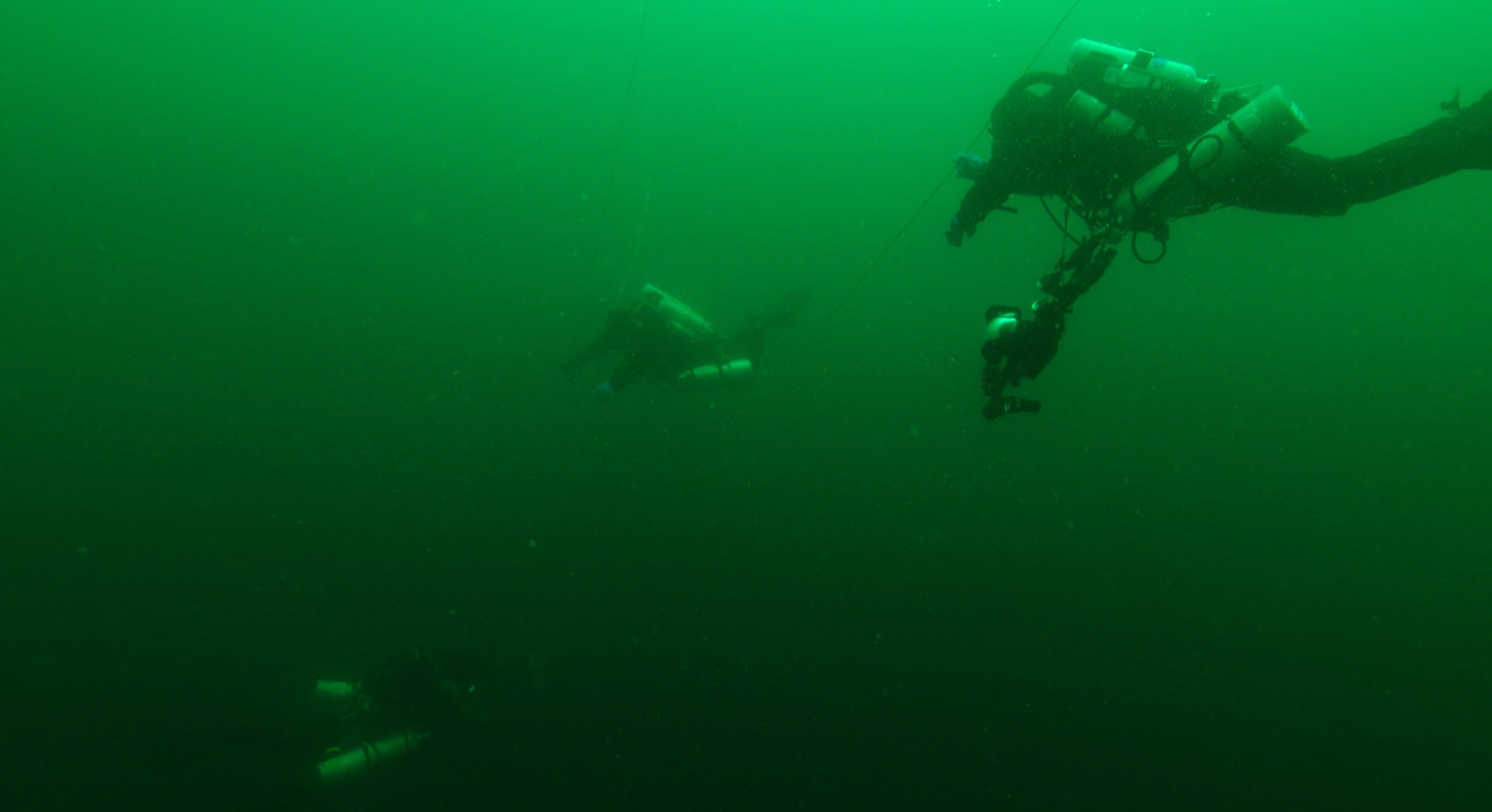
PAPER CHASE TO PURPLE HEARTS
When Lawton and other researchers brought a trove of evidence disputing the original boiler mishap theory to the Navy in 2001, they found an ally at the Naval Historical Center.
Senior archivist Bernard “Cal” Cavalcante started his own paper chase through U.S. and German war records, including previously classified documents Lawton never saw.
Cavalcante prepared a dossier of what he and Lawton’s team had discovered and presented it to then-Chief of Naval Operations Adm. Vern Clarke, who forwarded it to his boss, Secretary of the Navy Gordon R. England.
Both Navy leaders agreed that the sinking of Eagle 56 had to be reclassified as a combat loss due to a German U-boat.
They made a very public correction during a special ceremony on board the museum ship Salem in Quincy, Massachusetts, in the summer of 2001.
Officials bestowed Purple Heart Medals on three surviving Eagle 56 sailors as well as the next of kin of others who were lost during the submarine attack.
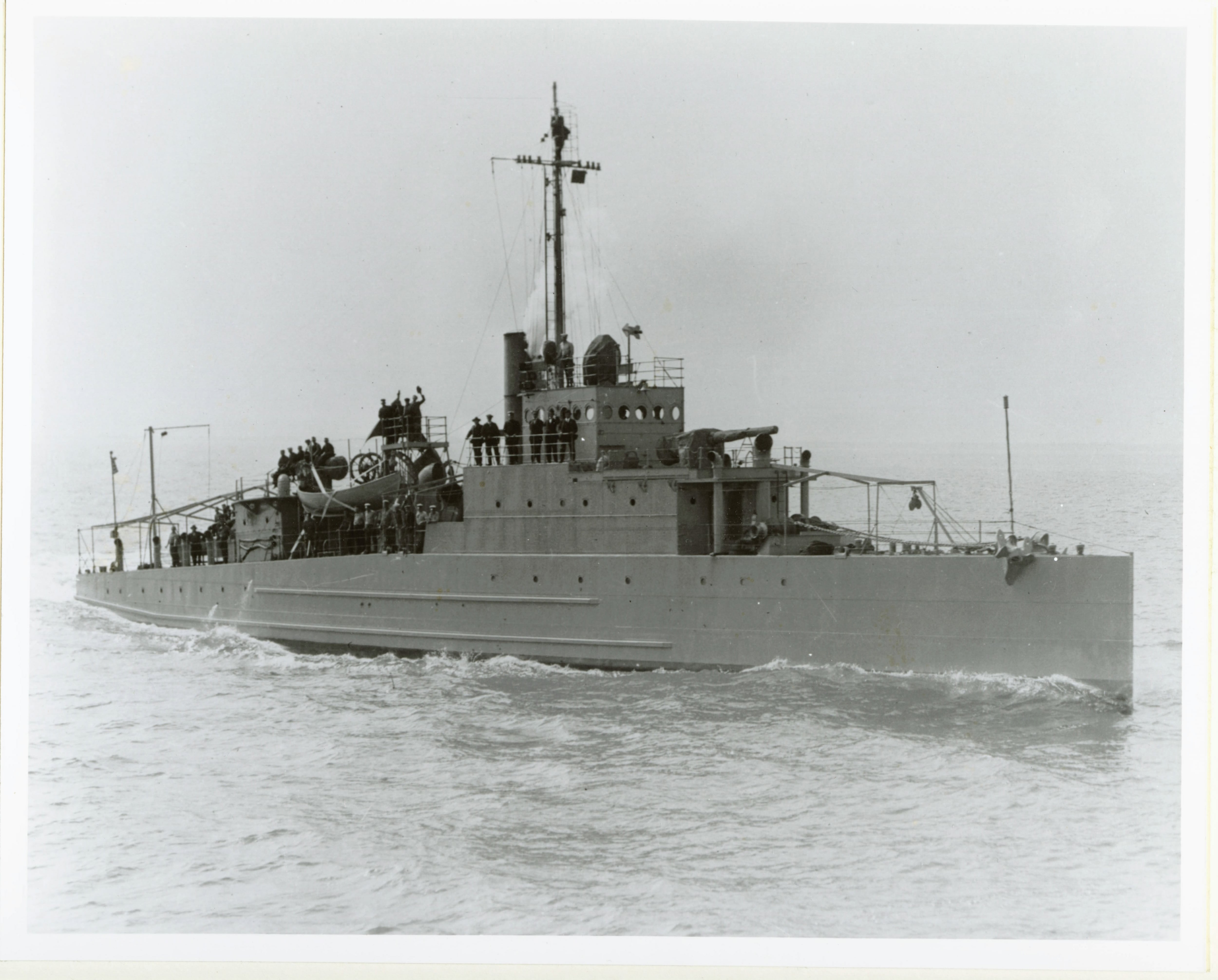
WHERE THE EAGLE LANDED
While Lawton and other researchers tore away the cloak concealing why Eagle 56 capsized, a key question continued to nag them: Where was the warship’s wreck?
The Nomad Exploration Team — a group of New England divers — became underwater detectives in 2014, canvassing a 37-mile search area more than a dozen times but no one could find Eagle 56 where it was supposed to rest.
Over the next four years, the trail seemed to go as cold as the waters off Maine.
And then 15 months ago, Lawton’s phone rang.
“They said they found the bow of Eagle 56. A couple weeks later, they found the stern, then the boilers, which were perfectly intact.”
Armed with improved sonar technology, the amateur divers discovered that the flat-sided warship had folded itself into the murky seabed, looking like the stones that surrounded it.
“Because of its shape, when the ship exploded and came to rest on a very rocky bottom, it laid in such a way on the bottom to be masked,” Lawton said. “Because of that, sonar was not giving back a shadow.”
Although the explosion had torn the ship in two, the Nomad Exploration Team found the boilers in pristine condition about 300 feet under the waves.
“It is really remarkable they survived that amount of external force and then remained in that condition,” Lawton said. "And after nearly 75 years in salt water.”
A new episode of the documentary airs Sunday evening.
J.D. Simkins is the executive editor of Military Times and Defense News, and a Marine Corps veteran of the Iraq War.





